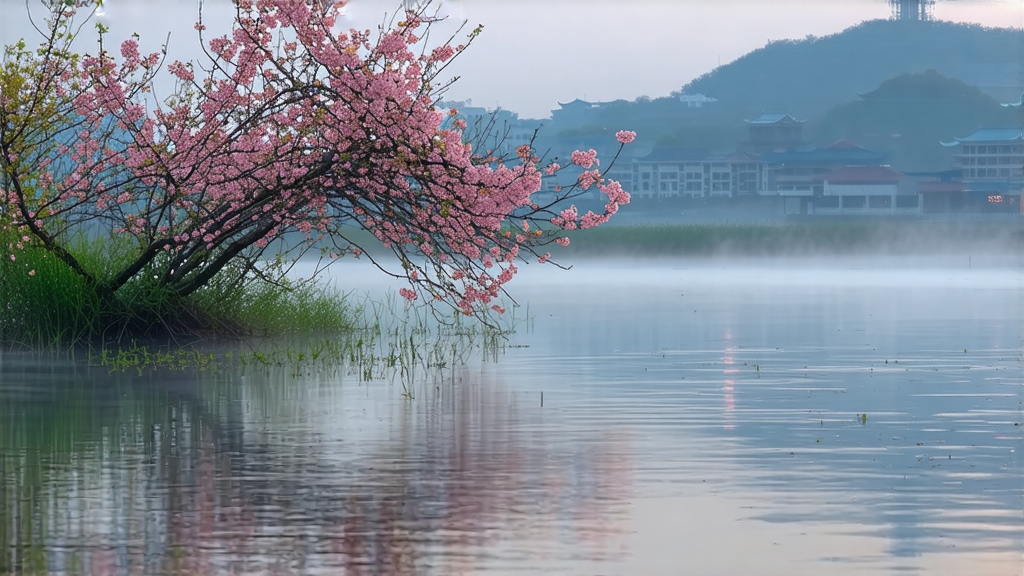
Tucked between the mist-laden hills of Dongting Mountain and the gentle ripples of Taihu Lake in Jiangsu Province, Biluochun—literally “Green Snail Spring”—has charmed Chinese emperors, poets, and now global tea lovers for over a thousand years. Its tiny, spiral-shaped leaves look like jade-green snail shells rolled between thumb and forefinger, releasing an aroma so fragrant that locals once called it “Scary Fragrance” (Xia Sha Ren Xiang) because its perfume would leap from the cup and startle the unprepared. Today the name Biluochun evokes elegance, rarity, and the first kiss of eastern China’s spring.
History and Legend
The first written record appears in the Tang Dynasty (618-907) treatise “The Classic of Tea,” but the cultivar gained imperial fame during the Kangxi reign (1662-1722). Visiting the lake on an inspection tour, the emperor was served a tea whose leaves immediately unfurled into dancing spirals and whose fragrance mingled with the mountain air. Delighted, he renamed it Biluochun to honor its shape and season. Monks from the nearby ancient temples still recount how the tea bushes, interplanted with peach, plum, and apricot trees, absorb floral notes through their roots, giving the leaf its signature fruity bouquet.
Micro-Terroir and Harvest Calendar
Dongting Mountain is actually two islands—East and West Dongting—rising from the shallow, mineral-rich Taihu. The lake acts as a giant heat reservoir, creating nightly fogs that slow photosynthesis and concentrate amino acids in the buds. Soils are acidic sandy loam laced with shell fragments, yielding leaves high in theanine and low in coarse cellulose. Picking begins around the Qingming festival (early April) when night temperatures hover at 10 °C and morning mist lingers until 9 a.m. Only the top bud plus the adjacent half-open leaf are plucked, requiring 60 000 such sets to produce 500 g of finished tea. Pre-Qingming lots (Mingqian) fetch prices higher than silver on the farm-gate auction because seven days later the leaf size doubles and the delicacy diminishes.
Varieties Within the Cultivar
Although “Biluochun” is protected under China’s geographical indication, two distinct types circulate in the market. Original-specimen “Dongting Mountain Biluochun” comes from seed-propagated old bushes (80–150 years) on the islands; the leaf is tiny, intensely aromatic, and yields a pale champagne liquor. “Zhejiang Biluochun,” grown in nearby provinces from cloned bushes, is larger, greener, and more affordable, yet lacks the peach-sweet aftertaste. A third experimental style, “Snowflake Biluochun,” is shade-grown for ten days before plucking, increasing chlorophyll and creating a creamy, gyokuro-like texture.
Crafting the Spiral: A Six-Hour Ballet
The transformation from fragile sprout to durable spiral unfolds within the same day it is picked. 1. Withering: shallow bamboo trays hold the buds for 30 minutes, allowing surface moisture to evaporate while the leaf remains cool. 2. Fixation (shaqing): the leaves are tossed into a drum pan pre-heated to 180 °C for exactly 90 seconds; this deactivates enzymes and locks in the jade color. 3. Primary rolling: while still at 60 °C, the leaves are hand-rubbed on coir mats with a downward pressure that begins the curl. 4. Secondary rolling & spiral forming: the most artistic step, performed on a 70 cm diameter bamboo tray. The master uses a whirlpool motion—fingers at four o’clock, palm at eight o’clock—to coax each bud into a tight spiral without breaking the surface fuzz. 5. Low-temperature baking: charcoal embers at 50 °C reduce moisture to 7 % and add a whisper of smokiness. 6. Final sorting: tweezers remove any yellow flakes; the finished tea rests for 48 hours so the inner moisture equalizes, stabilizing the curl.
Water, Vessel, and Gesture: Brewing Biluochun West- Lake Style
To taste the lake’s morning mist in your cup, use soft spring water at 75 °C—any hotter scalds the fuzz and releases tannic bitterness. A 150 ml tall glass allows you to watch the “tea dance.” Measure 3